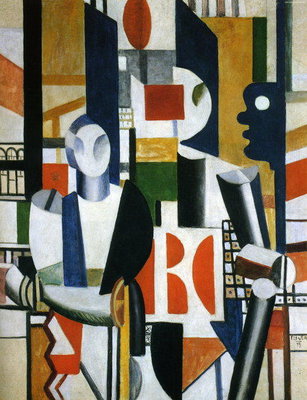Titre du blog : Art 2015
Auteur : art2015
Date de création : 16-05-2015
Auteur : art2015
Date de création : 16-05-2015
posté le 22-04-2016 à 06:15:06
Fernand Léger

After the First War, the mechanical elements, symbols of modernity, appear in his paintings.
The 20s were a prolific period in orders, meetings and creations. Illustrating texts, Blaise Cendrars, working in film, notably Abel Gance, discovers, through his dealer Léonce Rosenberg, the work of Piet Mondrian, and is working with Le Corbusier. His thinking influenced by cinema, leads him to conduct research on the place of the object free of any medium, defying gravity. The major work of this period is the "Mona Lisa key."
The 30s were marked by international recognition, and Yale University asked him to come to lecture on "the action of color in architecture." And he naturally takes the path of the United States, upon the entry into war of 1939. It will carry the famous series of "Cyclists", but also a lot of landscapes, where agricultural machinery (another symbol of modernity) are very present.
The postwar period was marked by his work on the polychrome reliefs, but also on the windows. painting side, he made one of those masterpieces "The Builders."
The works of the end of his life, are linked to a certain joy of living, such as "The Great Parade" and the series of country Parties. He died in 1955. Biot, on a proprièté purchased just before his death, fully dedicated to his work museum was inaugurated in 1960.